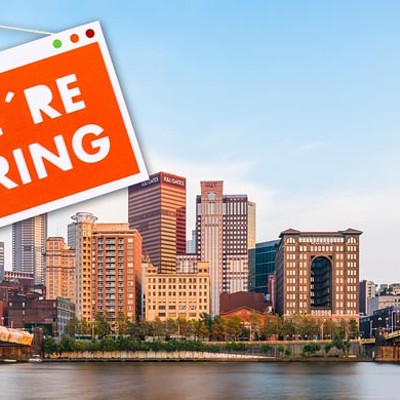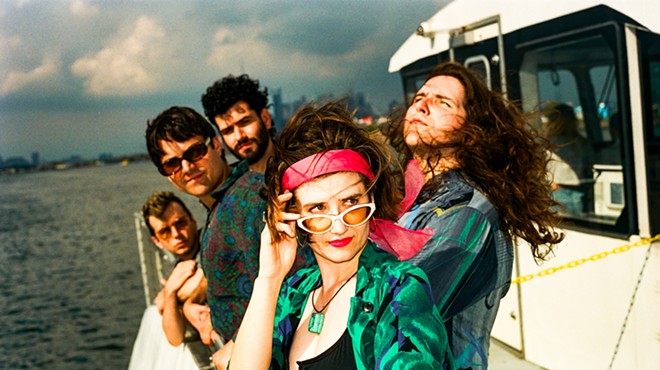Soho is one of those weird places whose name seems vaguely familiar, but few people actually know where it is. It's a lot like Shangri La, or Idaho, or even Glenwood. (Sure, you've driven across the Glenwood Bridge, but have you ever actually been to Glenwood?)
In fact, Soho isn't even a neighborhood at all, at least not officially. A 1977 city neighborhood atlas defined Soho as an 86-acre parcel flanking the northern end of the Birmingham Bridge. But it no longer appears on the city's list of 89 neighborhoods. Instead, today it's a part of "Bluff," a neighborhood that includes Duquesne University but whose name I hardly ever hear used.
It doesn't help that, unlike the New York City neighborhood bearing the same name, Soho has never been trendy. The 1922 History of Pittsburgh and Environs, for example, says Soho's "houses are old and not attractive, and are largely populated by foreign mill workers and their families." According to the prejudices of the day, apparently, having "foreign mill workers" in a neighborhood was reason enough to dismiss it.
The most definitive history of Soho I could find was a series of Pittsburgh Gazette-Times articles published in November 1915. Reporter George Fleming traced the Soho name back to James Tustin, who was born in England in 1774 and came to Pittsburgh in the late-18th or early 19th century.
Tustin bought much of the land that makes up Soho: A Gazette-Times map shows his estate bordering Forbes Avenue, Wyandotte Street, and the north bank of the Monongahela. Here he built a sizable stone mansion -- "acknowledged at the time to have been the most beautiful place in Pittsburgh," Fleming says -- and an orchard featuring more than a dozen varieties of fruit trees.
But Tustin, who a sketch reveals looked like an early-1800s version of Riff Raff from The Rocky Horror Picture Show, apparently had a hard time letting go of his home across the ocean. "For a few years after his arrival" in Pittsburgh, Fleming writes, "Mr. Tustin wore his native costume, silk stockings, low cut shoes and knee breeches." In Pittsburgh, that would be enough to mark him as an outsider, except maybe during showings of The Rocky Horror Picture Show. And throughout his estate, Tustin built "after the English idea," Fleming writes. "All shrubs, trees and small fruits he imported from England."
Not surprisingly, he did the same with the estate's name. Reports Fleming, "Tustin called his forge and the estate 'Soho,' after Soho in England, where he learned his trade."
Historians differ somewhat on which Soho Tustin had in mind. Various accounts assert Tustin had been an apprentice in the Soho district of London; others say it was in a part of the English city of Birmingham. In either case, Tustin kept his distance from Pittsburgh in more ways than one.
Fleming writes that Tustin and a noted French-born eccentric, Claire DeRouaud, spent their evenings "discuss[ing] the great themes of life and death, of fate, free will, all in the endless mazes lost." As a result of such discussions, "DeRouaud and his companions were reported ... to be in league with the devil." This, Fleming notes, even though "[t]hey were in fact deists and today would pass without notice the same as any moderate Unitarian." (DeRouaud's behavior probably didn't help matters: He insisted on having his dogs buried next to him, and was famous for cooking his breakfasts out on the sidewalk with a portable stove.)
Soho itself has "passed without notice" in the decades since Tustin died. As the 1977 neighborhood atlas sums up, the area was once "a pleasant residential area for many wealthy Pittsburghers" but "[a]s industry moved in, the wealthy moved out" -- and immigrants came to the area to work in the nearby mills of Hazelwood. A street that runs through Soho still carries Tustin's name, but other than that, all trace of he and DeRouaud is gone. The "Soho" name is barely remembered, and Tustin's estate is gone. It's almost as if he never really existed.
Or perhaps he just moved to Glenwood.










